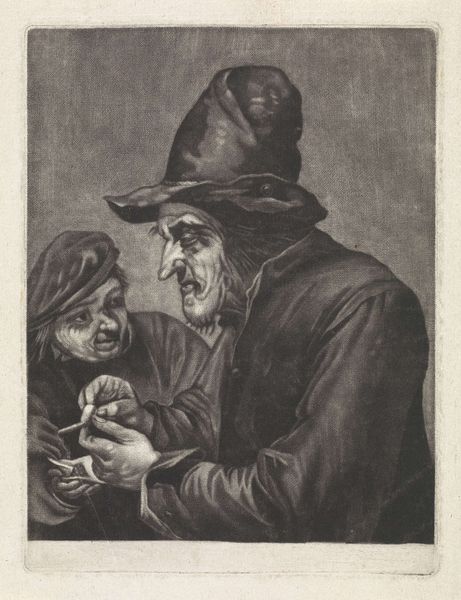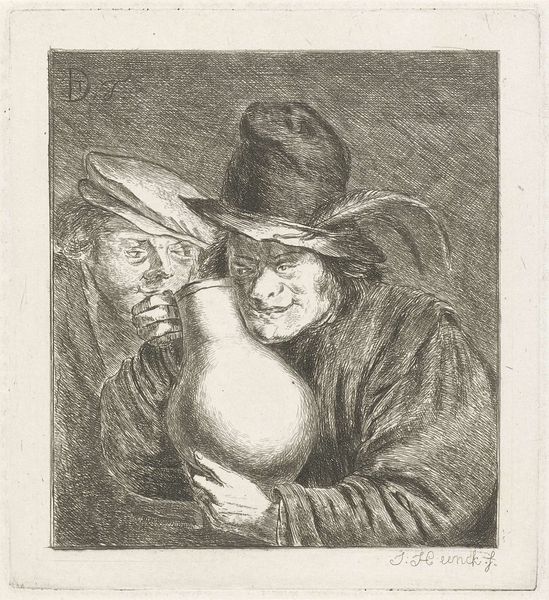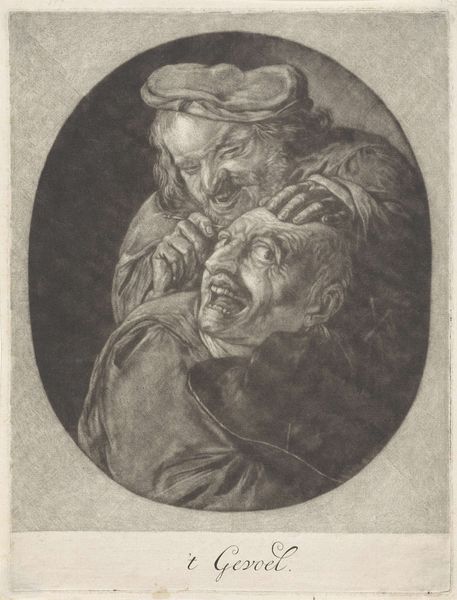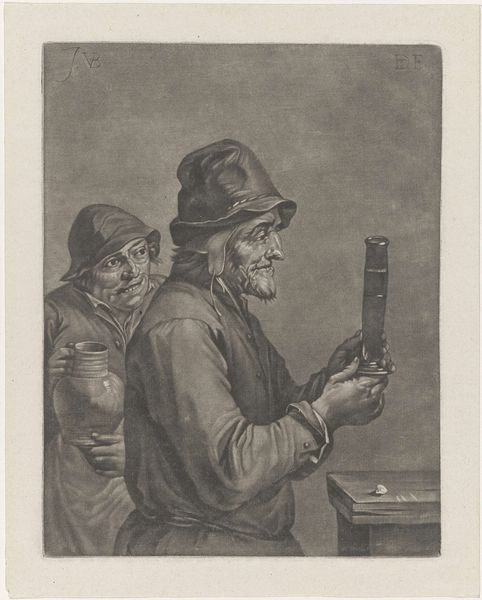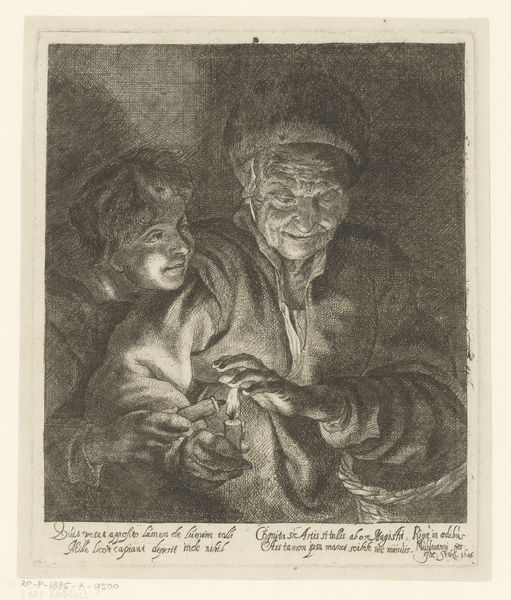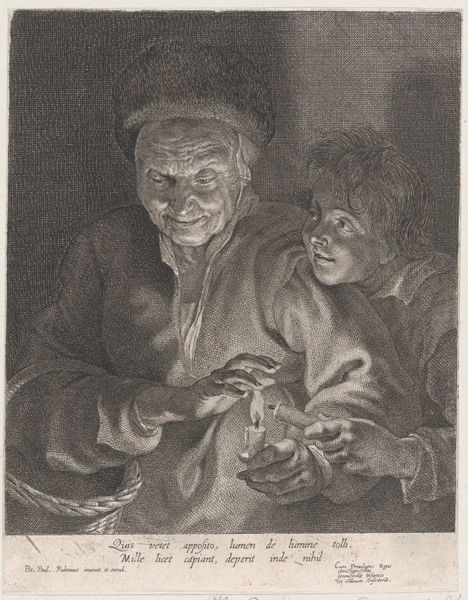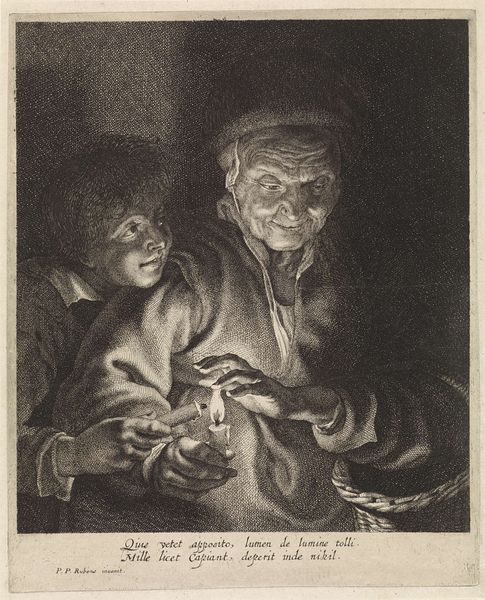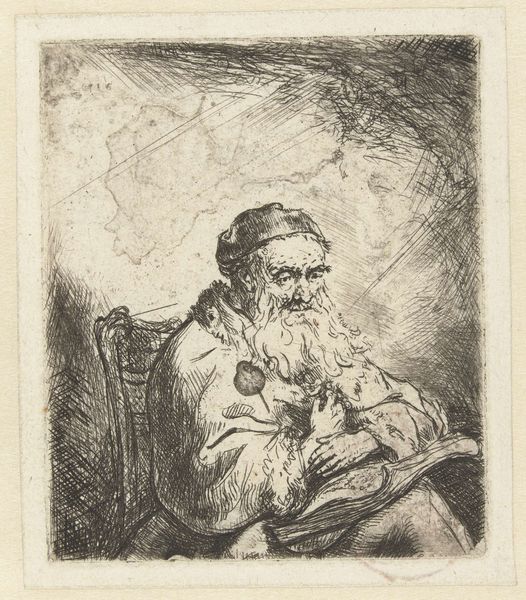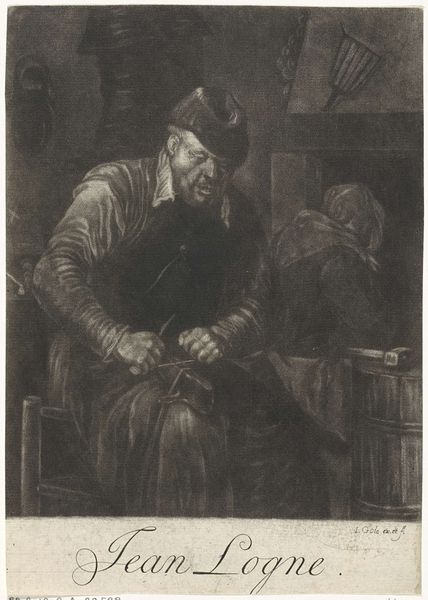
print, etching
#
portrait
#
facial expression drawing
#
baroque
# print
#
etching
#
portrait reference
#
portrait drawing
#
genre-painting
Dimensions: height 170 mm, width 116 mm
Copyright: Rijks Museum: Open Domain
Curator: This is "Boer stopt zijn pijp (variant B)," an etching by Jan van der Bruggen, dating roughly between 1659 and 1740. What strikes you most about it? Editor: Well, immediately, it's the faces. They're so detailed, almost grotesque, but fascinating. The light catches the elder's nose in this almost comical way. He's fiddling with his pipe, there’s such intent concentration, you know? Makes me wonder what he’s thinking about while his friend watches closely. Curator: Genre scenes like this were popular, offering glimpses into everyday life, particularly of the lower classes. There’s a social commentary woven into the choice to depict these people, their habits and what might be thought of as ‘roughness.’ It raises questions about who has the right to be seen and how. Editor: Right, right, but I also see it as a moment. Just a simple human interaction, despite any social implications. The other guy's kind of grinning, he seems to enjoy it somehow. There’s warmth in sharing a smoke. The shading contributes, adding like depth to their companionship. Curator: The etching technique allowed for the mass production of images, making them accessible to a wider audience. So it's not just about depicting them, but also circulating these representations. These prints could reinforce or challenge social norms and perceptions. Consider how class differences become spectacles for the emerging middle class who bought them to display. Editor: Hmmm, I guess my approach to art has less to do with history, and more to do with… well, the current emotional context? It feels so universal in its mundaneness. That pull towards connection, the little joys. Forget social critique for a moment—haven't we all looked at a friend doing something ordinary and just...been content? Curator: That resonance, though filtered through time, also reflects how genre paintings could become stages where we performed roles associated with cultural life. They're images we keep, like photographs, and turn them into evidence. Editor: Exactly. So, regardless of intention, this one made it! It gives that beautiful window into history but remains human. Curator: Well said. The layering of these historical images helps contextualize the past as evidence and feeling. Editor: Indeed. There are far more insights contained in those smudgy black lines of Bruggen than I had expected.
Comments
No comments
Be the first to comment and join the conversation on the ultimate creative platform.
